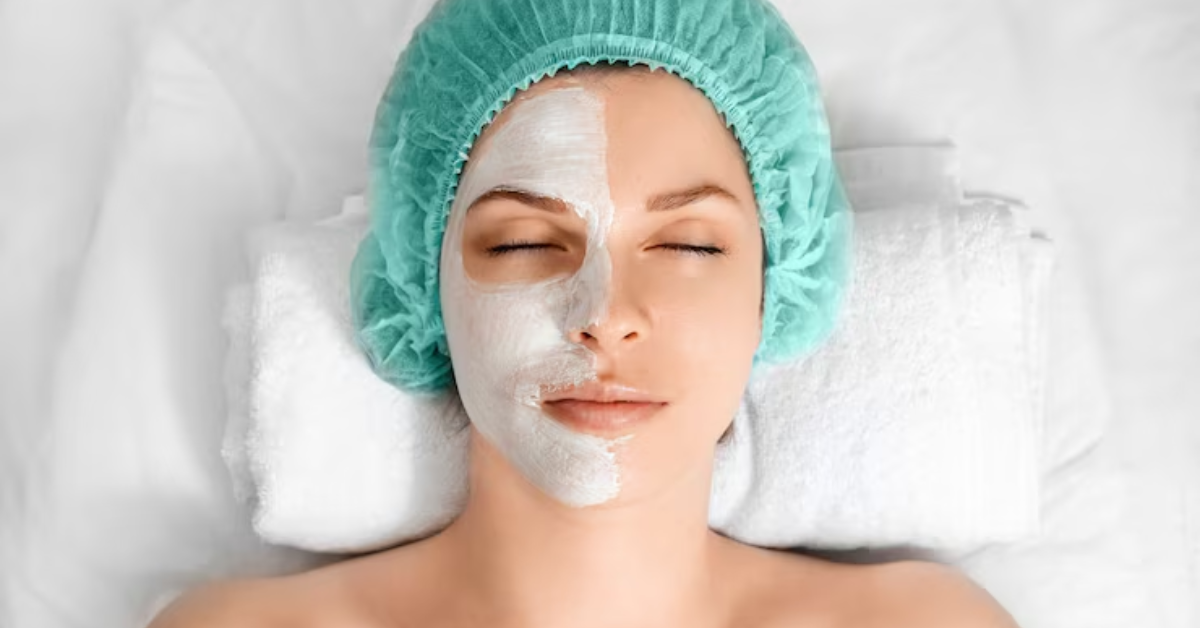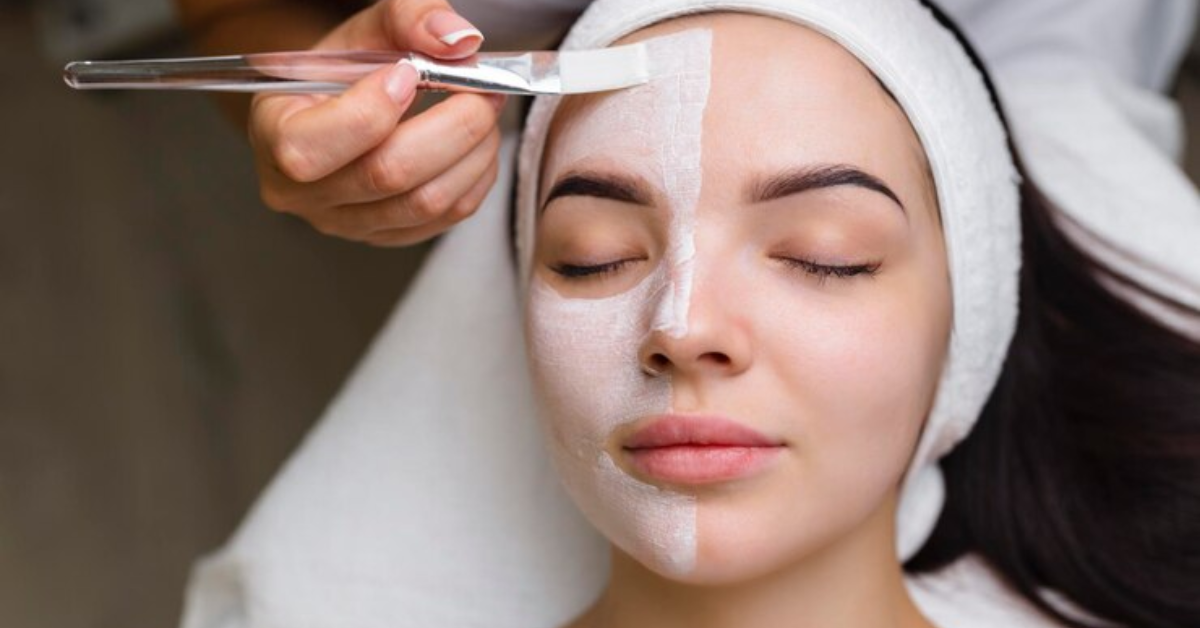Permanent Hair Removal Guide 2023
Over the past few years, the demand for permanent hair removal has skyrocketed and it's not hard to see why. The wide variety of options available, ranging from laser hair removal to electrolysis and IPL (Intense Pulsed Light), means that there is a solution to fit any budget or preference. If you're ready to embark on your journey towards smooth, hair-free skin, look no further than the comprehensive Permanent Hair Removal Guide 2023. Let us guide you through everything you need to know.
The Growing Popularity of Permanent Hair Removal:
In recent times, the desire for permanent hair removal has surged, and it's not hard to understand why. Traditional hair removal techniques like waxing, plucking, and shaving can be incredibly bothersome, time-consuming, and often result in skin irritations. With permanent hair removal, one can bid farewell to unwanted hair growth, paving the way to smooth and hairless skin. With technology's advancements, permanent hair removal has become increasingly accessible and affordable, adding to its growing popularity.
Defining Permanent Hair Removal
Permanent hair removal is a method of hair removal that targets the hair follicle to prevent future hair growth. Unlike temporary hair removal methods such as shaving, waxing, or threading, permanent hair removal techniques aim to provide a long-lasting solution to unwanted hair growth. These techniques include laser hair removal, electrolysis, and IPL (Intense Pulsed Light), each of which works by targeting the hair follicle in a specific way.
Laser hair removal uses a laser beam to destroy the hair follicle, preventing future hair growth. Electrolysis involves inserting a tiny needle into the hair follicle to destroy it, while IPL uses a broad-spectrum light source to target hair follicles, leading to hair removal. While the term "permanent" may be misleading, these techniques can provide long-lasting hair reduction, significantly reducing hair growth over time. However, results may vary depending on skin and hair type, and multiple treatments may be required to achieve desired results. It is important to consult with a qualified provider to determine which method is best for you and to discuss the benefits and risks of permanent hair removal.
Types of Permanent Hair Removal
When it comes to permanent hair removal, there are several methods to choose from, each with its own unique approach and benefits. Understanding the different types of permanent hair removal available can help you choose the method that is best suited for your skin and hair type, as well as your desired level of hair removal. Here, we will discuss the most popular types of permanent hair removal methods, including laser hair removal, electrolysis, and IPL (Intense Pulsed Light), providing an overview of how each method works and its pros and cons.
Laser Hair Removal
Laser hair removal is a popular method of permanent hair removal that uses a laser beam to target and damage the hair follicles, preventing future hair growth. The laser beam emits a concentrated beam of light that is absorbed by the melanin (pigment) in the hair follicles, which then heats up and destroys the follicle. The surrounding skin remains unaffected, making laser hair removal a safe and effective method for hair reduction.
Achieving Optimal Results for Different Skin Types with Laser Hair Removal
Laser hair removal is a popular method of hair reduction that has been known to produce long-lasting results. Skin type plays an important role in determining the effectiveness of laser hair removal. Here's a closer look at how different skin types respond to this treatment:
Light Skin: People with light skin are often considered to be the ideal candidates for laser hair removal. The reason behind this is that light skin tones have less melanin, which makes it easier for the laser to target the hair follicles without damaging the surrounding skin. Consequently, individuals with lighter skin tones usually require fewer treatments than those with darker skin.
Medium Skin: Individuals with medium skin tones can still be suitable candidates for laser hair removal. However, the pigment in the skin can absorb some of the laser's energy, making it more challenging to target the hair follicles. As a result, those with medium skin tones may require more treatments to achieve optimal results.
Dark Skin: Historically, laser hair removal has not been as effective for individuals with dark skin tones. This is because the pigment in the skin absorbs more of the laser's energy, making it challenging to target the hair follicles effectively. However, newer laser technologies have been developed to address this issue, making it possible for those with dark skin to receive laser hair removal treatment.
Skin type plays a critical role in determining the success of laser hair removal treatment. With advancements in laser technology, individuals with different skin types can now benefit from this effective hair reduction option.
Which Hair Types Are Best Suited for Laser Hair Removal?
Laser hair removal is a popular method for removing unwanted hair from various parts of the body. Still, its effectiveness depends on the type of hair being targeted. Some hair types respond better to laser treatment than others, and factors such as skin color and hair texture can also affect the success of the procedure. Understanding which hair types are most suitable for laser hair removal is crucial to achieving the desired results. Here, we will see the hair types that are most effectively treated with laser hair removal.
Light Hair: Hair that is light in color, such as blonde or red, is the most difficult to treat with laser hair removal. This is because the phemelianin pigment in light-colored hair is not as effective at absorbing the laser light.
Medium Hair: People with brown hair that is on the lighter side fall into the category of medium hair. While medium hair is still treatable, it usually requires more treatments than dark hair.
Dark Hair: On the other hand, dark hair, whether it's black or brown, is the easiest to treat. This is because dark hair contains more pigmentation, which allows the laser beam to be absorbed more efficiently.
Personal Pain Tolerance and Laser Hair Removal
The level of discomfort experienced during laser hair removal varies from person to person and largely depends on their pain tolerance. Some describe the sensation as similar to small rubber bands snapping against the skin. Despite the potential for discomfort, the popularity of laser hair removal remains high, and many people are satisfied with their decision to undergo the procedure.
The intensity of discomfort can vary depending on the area where laser hair removal is performed, such as the underarms or bikini line. Individual pain tolerance and skin characteristics are contributing factors. Many laser hair removal centers may offer options such as local anesthetics, potent numbing creams, or cooling attachments to their devices to alleviate discomfort.
Pros of Laser Hair Removal
- Laser hair removal provides long-lasting results as compared to traditional hair removal methods like shaving or waxing. It destroys the hair follicle, preventing hair from growing back for an extended period of time.
- Laser hair removal is a precise method of hair removal that targets specific hair follicles without damaging the surrounding skin.
- It can be performed quickly and efficiently, as the laser can target multiple hair follicles simultaneously.
- It is generally less painful than traditional hair removal methods like waxing or electrolysis.
- It can be used on almost any part of the body, including the face, underarms, legs, and bikini area.
- It can improve the quality of the skin in the treated area, as it can help to reduce the occurrence of ingrown hairs and razor bumps.
Cons of Laser Hair Removal
- Laser hair removal can be more expensive than traditional hair removal methods, particularly for larger treatment areas or multiple sessions.
- While temporary, laser hair removal can cause some side effects such as redness, swelling, and skin irritation. These symptoms usually subside within a few hours or days.
- Although rare, there is a risk of more serious side effects such as burns or skin discoloration, particularly if the procedure is performed by an unqualified provider or if the patient fails to follow proper aftercare instructions.
Laser hair removal is a popular and effective method of permanent hair removal that can provide long-lasting results. With advancements in technology, laser hair removal has become more accessible and affordable, making it an excellent option for people looking for a long-term solution to unwanted hair growth.
Electrolysis
Electrolysis is a hair removal technique that has been in use for over a century. It involves the insertion of a tiny needle into each hair follicle and the application of an electric current to destroy the hair root. The procedure can be used to remove hair from any part of the body and is suitable for all skin and hair types. While electrolysis has many benefits, it also has its drawbacks.
Pros of Electrolysis
- Unlike other hair removal techniques, electrolysis provides permanent results. Once the hair follicle is destroyed, the hair will not grow back.
- Electrolysis can be used on any part of the body, including the face, eyebrows, bikini area, and legs.
- Electrolysis is safe for all skin types, including sensitive skin. It does not cause irritation, scarring, or pigmentation changes.
- Electrolysis targets each hair follicle individually, ensuring that only the unwanted hair is removed, leaving the surrounding skin intact.
Cons of Electrolysis
- Electrolysis is a time-consuming process as each hair follicle must be treated individually. This can make it a costly and lengthy procedure.
- The insertion of the needle into the hair follicle can be painful, and the electric current can cause discomfort. While numbing creams can be used to reduce the pain, they may not be suitable for everyone.
- Electrolysis is not suitable for large areas such as the legs or back as it would take too much time and would be too expensive.
- While electrolysis provides permanent hair removal, it may take multiple sessions to achieve the desired results. This can be time-consuming and costly.
Electrolysis is an effective and safe method for permanent hair removal. It is suitable for all hair colors and skin types and can target individual hair follicles with precision. Although it may be more time-consuming and expensive than other hair removal methods, electrolysis provides a more permanent solution to unwanted hair growth. It is essential to consider the potential risks and drawbacks of electrolysis, such as discomfort and skin irritation, and to consult with a professional before undergoing the procedure. With proper care and maintenance, electrolysis can provide long-lasting results and boost confidence in one's appearance.
IPL (Intense Pulsed Light)
IPL, or Intense Pulsed Light, is a popular cosmetic treatment that uses light energy to improve the appearance of various skin conditions. It works by delivering a broad spectrum of light wavelengths to the skin, which targets specific skin cells and pigments. The light energy heats and destroys these cells, which prompts the body's natural healing process to create new, healthy cells.
Pros of IPL
- IPL can effectively treat a variety of skin concerns, including sun damage, hyperpigmentation, acne scars, rosacea, and fine lines and wrinkles.
- It is a non-invasive and relatively painless procedure, with no downtime required.
- Results are usually noticeable after just one treatment, although multiple treatments may be necessary for optimal results.
- IPL is a safe treatment option for most skin types and tones, although it may not be suitable for those with very dark skin.
Cons of IPL
- IPL can cause some mild discomfort during the treatment, with a sensation often described as a snapping or stinging feeling.
- ·Some patients may experience temporary redness, swelling, or bruising after the treatment, although these side effects typically subside within a few hours to a few days.
- IPL can make the skin more sensitive to sunlight, so patients must wear sunscreen and avoid direct sun exposure for several days following the treatment.
- IPL is not a permanent solution, and maintenance treatments may be necessary to maintain results over time.
IPL is a versatile and effective cosmetic treatment that can improve the appearance of various skin concerns. While there are some potential drawbacks to consider, such as temporary discomfort and the need for maintenance treatments, the benefits of IPL make it a popular choice for those looking to achieve smoother, more even-toned skin. With proper care and treatment from a qualified provider, IPL can help patients achieve their desired results and boost their confidence in their skin.
Preparing for Permanent Hair Removal
Preparing for permanent hair removal is an essential step in achieving successful results. Permanent hair removal techniques such as laser hair removal and electrolysis require a certain level of preparation to ensure the treatment is safe and effective. Proper preparation can also help to minimize potential side effects and ensure that the treatment is comfortable.
Avoiding Sun Exposure and Certain Medications
Avoiding sun exposure and certain medications is an essential part of preparing for permanent hair removal treatments. Exposure to the sun's harmful rays can lead to skin damage, making it more vulnerable to potential side effects of permanent hair removal such as hyperpigmentation or burns. It is recommended to avoid sun exposure for at least two weeks before and after the treatment and to use sunscreen with an SPF of 30 or higher. Certain medications, such as antibiotics or anti-inflammatory drugs, can also increase the risk of side effects or interfere with the effectiveness of permanent hair removal treatments. By taking these precautions, patients can ensure the best possible results from their permanent hair removal treatment.
What to Expect During a Consultation
During a consultation for cosmetic treatment, patients can expect to discuss their concerns and goals with a qualified provider. The provider will ask questions about the patient's medical history, skin type, and any medications they are taking to determine if they are a suitable candidate for the treatment. They may also assess the area to be treated and provide information on the treatment options available and the expected results. The provider will explain the benefits and potential risks of the treatment and answer any questions the patient may have. They may also provide a personalized treatment plan, including the number of sessions required, the expected downtime, and any pre- or post-treatment care instructions. By the end of the consultation, patients should have a clear understanding of the treatment process and be able to make an informed decision about whether to proceed with the treatment.
Aftercare for Permanent Hair Removal
Aftercare for permanent hair removal is an essential part of ensuring the best possible results from the treatment. It is important to follow the provider's aftercare instructions carefully to minimize the risk of side effects and complications and to promote healing and recovery.
The Importance of Aftercare
Aftercare can vary depending on the type of permanent hair removal treatment received. However, there are some general guidelines that apply to most treatments. Patients should avoid sun exposure for several weeks after the treatment and use sunscreen with an SPF of 30 or higher when going outdoors. They should avoid hot baths, saunas, and exercise for the first 24-48 hours after the treatment and avoid picking, scratching or rubbing the treated area.
The Importance of Moisturizing
Moisturizing the treated area is crucial to promote healing and prevent dryness, itching, and discomfort. Patients should apply a moisturizing lotion or cream as directed by the provider to keep the skin hydrated and healthy.
The Importance of Avoiding Certain Activities
Patients should also avoid certain activities that can irritate the treated area, such as waxing or plucking hair, applying makeup, or using abrasive skin care products for several days after the treatment. They should also avoid exposing the treated area to extreme temperatures, such as hot showers or cold weather.
Properly adhering to the aftercare instructions provided by the provider can significantly enhance the overall success of permanent hair removal treatment. Not only does it minimize the risk of unwanted side effects and complications, but it also promotes a speedy and healthy recovery process. Patients who diligently follow the aftercare routine prescribed by their provider can ensure that their treatment is safe, effective, and provides the desired results they are seeking. It's important to remember that the provider's aftercare instructions are personalized for each patient and their specific treatment plan, so following them is key to achieving optimal outcomes.
Conclusion
This guide has provided valuable insights into the process of permanent hair removal, including the preparation, treatment, and aftercare stages. It is crucial to thoroughly research the available treatment options and find a qualified provider who can tailor a personalized treatment plan to achieve the desired results. Patients should also be aware of the importance of aftercare, as it can significantly impact the overall success of the treatment and minimize the risk of unwanted side effects and complications. By following the advice and guidance provided in this guide, patients can approach permanent hair removal with confidence and achieve their desired results with a safe, effective, and personalized treatment plan.
BOOK YOUR FREE SESSION
We will get back to you as soon as possible
Please try again later
-
Locations
- Laser hair removal fort lauderdale
- Laser hair removal Hollywood
- Laser hair removal Pompano Beach
- Laser hair removal Pembroke Pines
- Laser hair removal Dania
- Laser hair removal Coral Springs
- Laser hair removal Margate
- Laser hair removal Coconut Creek
- Laser hair removal Deerfield Beach
- Laser hair removal Hallandale
- Laser Hair Removal Cooper city
- Laser hair removal davie
© 2021 Huggie Beauty Developed by LocalOptimize.co - All Rights Reserved










